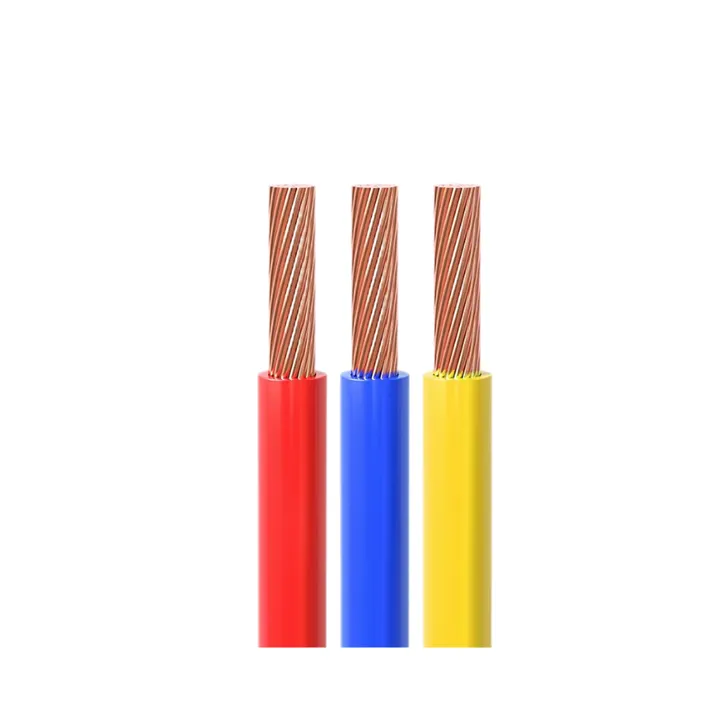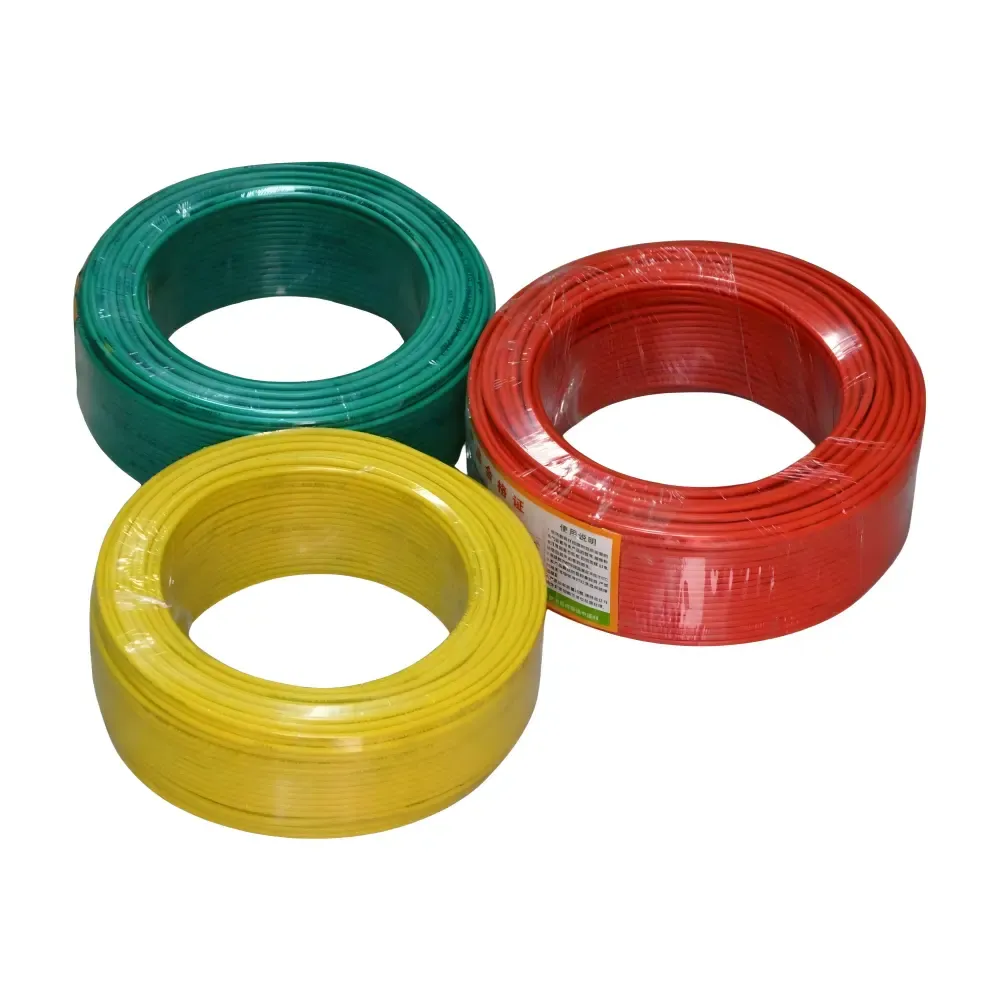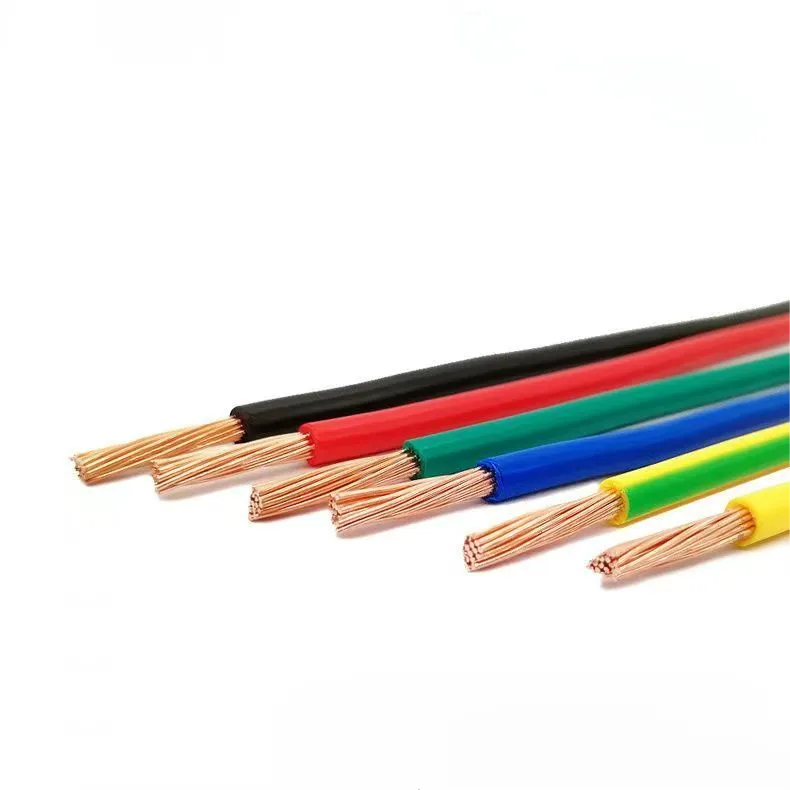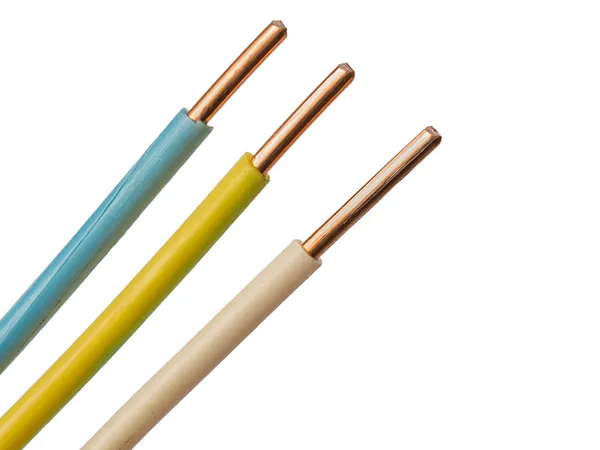Marine-Grade Cable Specifications for Offshore Platforms
Time: 2025-07-17 15:30:14
Source: Henan Province Jianyun Cable Co., Ltd.
Offshore platforms, such as those used in oil and gas production, wind farms, or other marine applications, operate in harsh marine environments characterized by saltwater exposure, extreme temperatures, mechanical stress, and fire hazards. Marine-grade cables are essential to ensure reliable power transmission, control, and communication while meeting stringent safety and regulatory standards. These cables must withstand corrosion, moisture, UV radiation, and potential explosive atmospheres (e.g., ATEX zones). This document outlines the specifications for marine-grade cables used on offshore platforms, providing a structured approach to their selection and application.
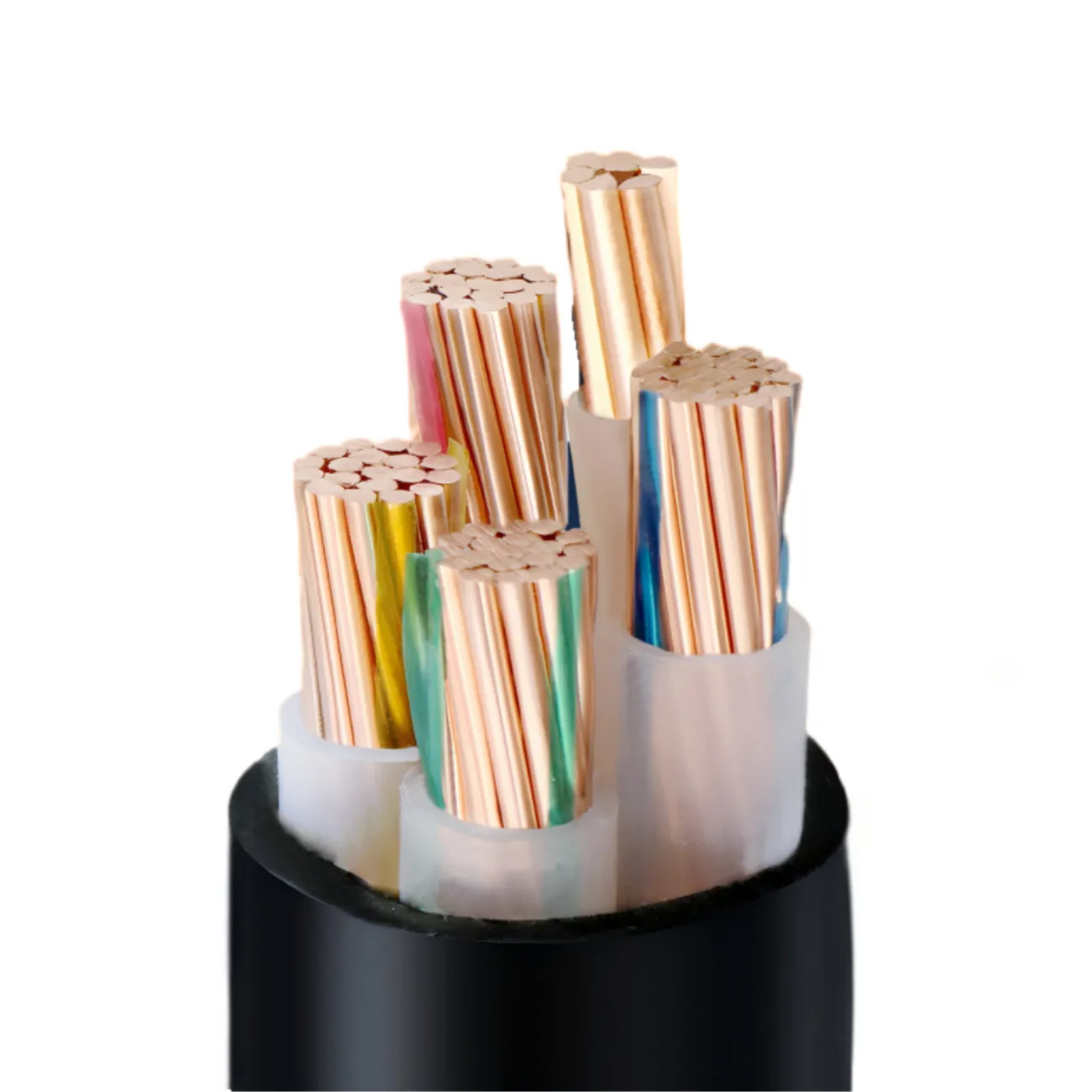
Table of Contents
1. Environmental and Operational Challenges
Offshore platforms present unique challenges that marine-grade cables must address:
-
Saltwater Corrosion: Cables are exposed to saline environments, requiring corrosion-resistant materials like tinned copper or specialized sheathing.
-
Moisture and Humidity: High humidity and water ingress necessitate waterproof or water-resistant designs with robust sealing.
-
Extreme Temperatures: Cables must operate in temperatures ranging from -40°C to 90°C or higher, depending on the platform’s location and equipment heat output.
-
Mechanical Stress: Cables face vibration, abrasion, and impact from platform operations, waves, or installation processes.
-
Fire and Explosion Risks: Offshore platforms often include ATEX zones (e.g., Zone 1/21, 2/22), requiring cables to be fire-resistant, low-smoke, and compliant with intrinsic safety standards.
-
UV Radiation: Cables exposed on platform surfaces must resist degradation from prolonged UV exposure.
-
Regulatory Compliance: Cables must meet marine and offshore standards, such as IEC 60092, DNV, ABS, or ATEX directives, to ensure safety and operability.
2. Key Specifications for Marine-Grade Cables
Marine-grade cables for offshore platforms must meet the following specifications to ensure safety, durability, and performance:
-
Conductor Material: Tinned copper for corrosion resistance, with stranded conductors for flexibility and vibration resistance.
-
Insulation: Cross-linked polyethylene (XLPE) or ethylene propylene rubber (EPR) for high dielectric strength, thermal stability, and resistance to moisture and chemicals.
-
Sheathing: Low-smoke, zero-halogen (LSZH) or chlorinated polyethylene (CPE) for fire safety, UV resistance, and protection against oil, chemicals, and saltwater.
-
Armoring: Steel wire braid (SWB) or galvanized steel wire armor (SWA) for mechanical protection, especially for direct burial or exposed installations.
-
Fire Performance: Compliance with IEC 60332-3 (flame retardancy), IEC 60331 (circuit integrity), and IEC 61034 (low smoke) for safety in fire-prone areas.
-
Water Resistance: Water-blocking compounds or tapes to prevent water ingress, meeting IP68 or similar ratings for submersible applications.
-
Temperature Rating: Minimum range of -40°C to 90°C, with some cables rated up to 120°C for high-temperature equipment zones.
-
Voltage Rating: Low-voltage (0.6/1kV) for control and instrumentation, medium-voltage (1–35kV) for power distribution, and high-voltage (>35kV) for grid connections.
-
Certifications: Compliance with IEC 60092 (electrical installations in ships), DNV-GL, ABS, Lloyd’s Register, and ATEX/IECEx for hazardous areas.
3. Recommended Cable Types
The following cable types are recommended for offshore platforms, tailored to specific functions and environmental conditions:
3.1 Marine Power Cables
-
Description: Low- or medium-voltage cables for power distribution to platform equipment, such as pumps, motors, and lighting.
-
Construction: Tinned copper conductors, XLPE or EPR insulation, LSZH or CPE sheathing, and SWA or SWB armoring.
-
Applications: Power supply to critical systems on oil rigs, wind turbines, or processing units.
-
Advantages: High corrosion resistance, mechanical strength, and fire safety for reliable power delivery.
-
Standards: IEC 60092-353, DNV-GL, ABS.
3.2 Fire-Resistant Cables
-
Description: Cables designed to maintain circuit integrity during fire exposure, critical for emergency systems in ATEX zones.
-
Construction: Tinned copper conductors, mica tape for fire resistance, XLPE insulation, and LSZH sheathing, often with armoring.
-
Applications: Emergency lighting, fire alarms, and shutdown systems on offshore platforms.
-
Advantages: Ensures operational continuity during fire, compliant with stringent safety regulations.
-
Standards: IEC 60331, BS 6387, IEC 60092-350.
3.3 Low-Smoke, Zero-Halogen (LSZH) Cables
-
Description: Cables that emit minimal smoke and no toxic halogens during fire, enhancing safety in confined platform spaces.
-
Construction: Tinned copper conductors, XLPE or EPR insulation, LSZH sheathing, and optional SWB armoring.
-
Applications: Power, control, and communication systems in enclosed areas like control rooms or accommodation modules.
-
Advantages: Improves evacuation safety and reduces toxic emissions in fire scenarios.
-
Standards: IEC 60754, IEC 61034, EN 50575.
3.4 Instrumentation and Control Cables
-
Description: Multi-core cables for low-power signals, designed for control and monitoring systems in hazardous areas.
-
Construction: Tinned copper conductors, twisted pair or multi-core design, XLPE or PVC insulation, collective or individual screening, and LSZH or PUR sheathing.
-
Applications: SCADA systems, sensors, and actuators for platform automation and monitoring.
-
Advantages: Low electromagnetic interference, suitable for precise signal transmission in explosive atmospheres.
-
Standards: IEC 60092-376, EN 50288-7, IEC 60079-14.
3.5 Fiber Optic Cables
-
Description: Non-electrical cables for high-speed data transmission, ideal for communication in ATEX zones.
-
Construction: Single-mode or multi-mode fibers, LSZH or PUR sheathing, water-blocking layers, and optional armoring for mechanical protection.
-
Applications: Data networks for platform monitoring, control systems, and remote diagnostics.
-
Advantages: Immune to electromagnetic interference, inherently safe, and high bandwidth for real-time data.
-
Standards: IEC 60794, IEC 60092-370.
3.6 Intrinsically Safe Cables (Ex i)
-
Description: Cables designed to limit electrical energy to prevent ignition in highly explosive ATEX zones (e.g., Zone 0/20).
-
Construction: Tinned copper conductors, XLPE or PVC insulation, blue LSZH sheathing for identification, and robust screening.
-
Applications: Instrumentation and control circuits in gas-rich environments like drilling platforms.
-
Advantages: Prevents ignition risks, suitable for the most hazardous areas.
-
Standards: IEC 60079-11, EN 50303.
4. Comparison of Cable Types
|
Cable Type
|
Voltage/Application
|
Key Features
|
Environment
|
Standards
|
|
Marine Power
|
Low/Medium Voltage
|
Tinned copper, XLPE/EPR, LSZH, armored
|
Power distribution
|
IEC 60092-353, DNV-GL
|
|
Fire-Resistant
|
Low Voltage
|
Mica tape, XLPE, LSZH, armored
|
Emergency systems
|
IEC 60331, BS 6387
|
|
LSZH
|
Low/Medium Voltage
|
Low-smoke, halogen-free, armored
|
Confined spaces
|
IEC 60754, IEC 61034
|
|
Instrumentation
|
Low Voltage
|
Twisted pair, screened, LSZH/PUR
|
Control/monitoring
|
IEC 60092-376, EN 50288-7
|
|
Fiber Optic
|
Data Transmission
|
Non-electrical, LSZH/PUR, armored
|
Communication networks
|
IEC 60794, IEC 60092-370
|
|
Intrinsically Safe
|
Low Voltage
|
Low-energy, screened, blue LSZH
|
Hazardous zones
|
IEC 60079-11, EN 50303
|
5. Installation and Maintenance Guidelines
Proper installation and maintenance are critical to ensure the performance and safety of marine-grade cables on offshore platforms:
-
Certified Installation: Use personnel trained in marine and ATEX standards to install cables, ensuring compliance with IEC 60092-352 and IEC 60079-14.
-
Cable Routing: Route cables through cable trays, conduits, or ducts to protect against mechanical damage, vibration, and saltwater exposure.
-
Sealing and Glanding: Use marine-grade, ATEX-certified cable glands (e.g., IP68-rated) to prevent water and gas ingress into enclosures.
-
Grounding and Bonding: Ensure proper grounding of armoring and shields to prevent static electricity buildup, adhering to equipotential bonding requirements.
-
Periodic Inspections: Conduct regular visual and electrical inspections (per IEC 60079-17) to check for corrosion, insulation degradation, or mechanical damage.
-
Testing: Perform insulation resistance, continuity, and fire performance tests to verify cable integrity, using equipment like megohmmeters.
-
Maintenance Records: Maintain detailed records of installation, inspections, and repairs for compliance and traceability during audits.
-
Environmental Protection: Ensure cables are protected from prolonged UV exposure or chemical contact, using appropriate sheathing or additional covers.
6. Conclusion
Marine-grade cables for offshore platforms must meet rigorous specifications to ensure reliable power, control, and communication in harsh marine environments. Key cable types include marine power cables, fire-resistant cables, LSZH cables, instrumentation cables, fiber optic cables, and intrinsically safe cables, each designed for specific applications and ATEX zone requirements. By selecting cables with tinned copper conductors, XLPE/EPR insulation, LSZH or CPE sheathing, and appropriate armoring, and adhering to standards like IEC 60092 and DNV-GL, platform operators can ensure safety and performance. Proper installation, using certified glands and grounding, and regular maintenance are essential to maintaining cable integrity and compliance in offshore environments.

